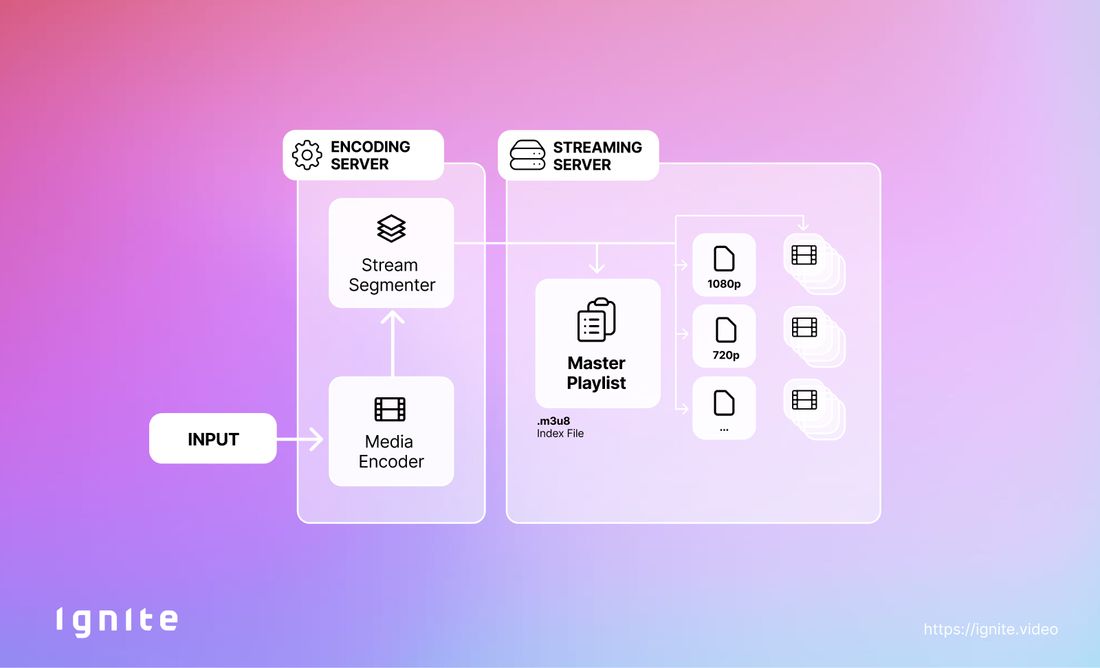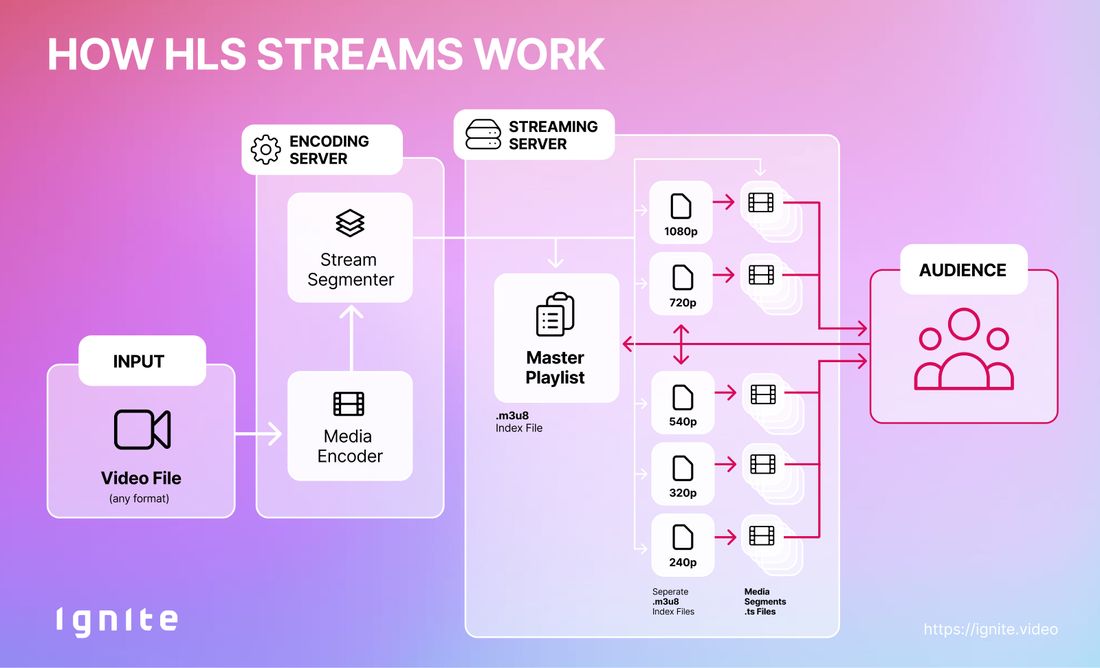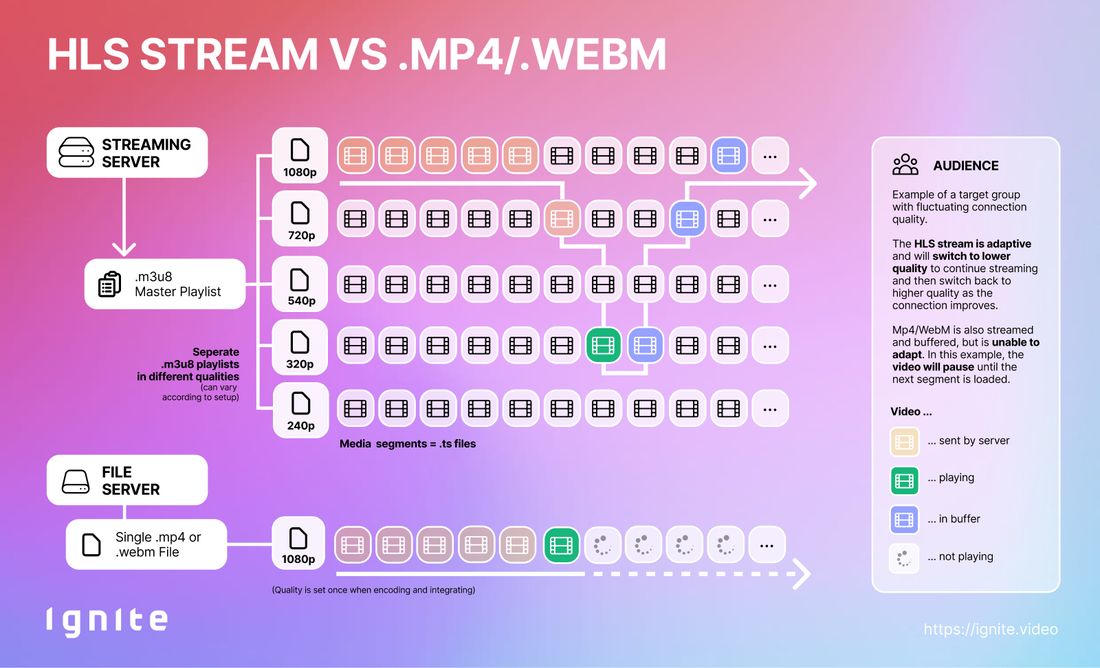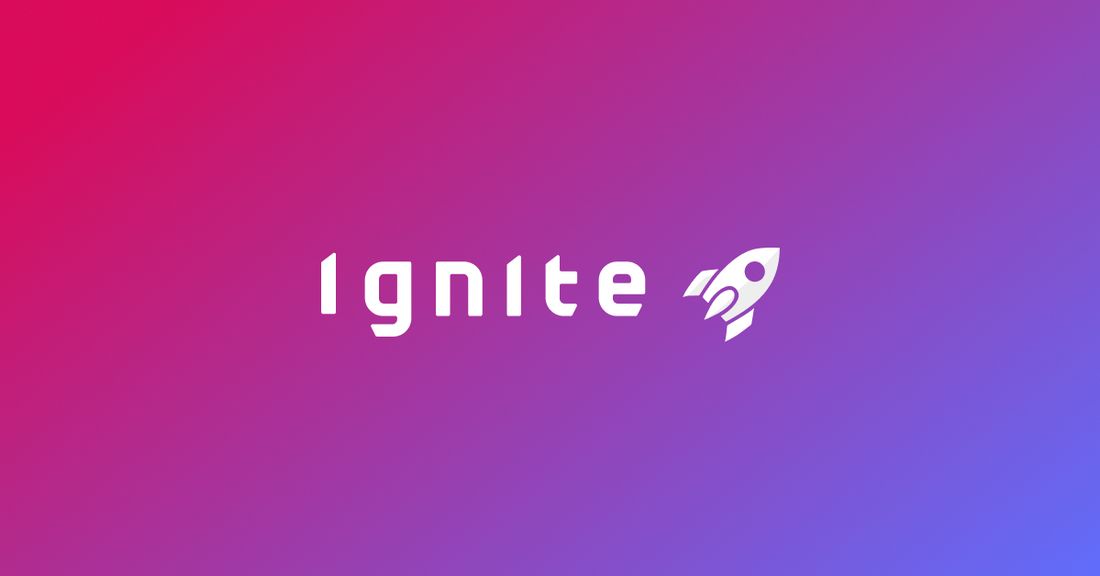
MP4 or HLS? What Works Best for Video on Your Website
Websites are becoming more and more video-heavy – whether it’s product demos, explainer videos, customer testimonials, or event streams. And that brings up a crucial technical question: how do you actually embed videos on your site?
- Do you just upload a simple MP4 file?
- Do you (like almost everyone else) default to YouTube?
- Or do you go the professional route with HLS (HTTP Live Streaming)?
In this article, you'll learn:
- What MP4 is – and what it can (and can’t) do
- How HLS works – and why it’s the better choice in most cases
- How to create your own HLS files – with tools and practical steps
- And: how Ignite takes care of the hard parts for you
Let’s dive in 👇
Why is this even a question: HLS or MP4?
When it comes to embedding video on your website, you’ve got a few options:
- Upload an MP4 file
- Use YouTube (yes, a lot of people still do)
- Or go for a professional setup with HLS
The tech behind your video matters more than you might think:
- MP4 seems simple – but it doesn’t meet modern demands very well.
- HLS is faster, more stable, and scalable – but more complex to set up.
So your choice has big implications for things like:
- Loading times
- Quality on slow connections
- User experience across devices
- Scalability when traffic spikes
- And yes – even your Google ranking

Basics: What is an MP4 file?
MP4 is a so-called container format. It can include video, audio, subtitles, and metadata – and it plays on pretty much every device. On websites, it’s usually paired with the HTML5 <video> tag.
So basically... it’s just a video file.
Advantages:
- Simple to use
- Widely supported by browsers and devices
- No extra infrastructure required
Disadvantages:
- The full file has to be downloaded, in a single quality
- No adaptive quality for slow connections
- Can cause performance issues with multiple users
- One of the biggest problems: web servers.
“A single HD or 4K stream can require several megabits per second. If many users access the video at the same time, this multiplies quickly. Most web hosting plans aren’t built for that – they often promise 'unlimited traffic', but in reality there are technical or contractual limits, especially around continuous data transfer.” - Marco Keul, Hosttest.de
Basics again: What is HLS streaming?
“HTTP Live Streaming (HLS) is an HTTP-based adaptive bitrate streaming communications protocol implemented by Apple Inc. It allows streaming of audio and video content over the internet.”
– Wikipedia: HTTP Live Streaming
HLS stands for HTTP Live Streaming – a streaming protocol developed by Apple. Instead of one big file, your video is split into small segments and multiple quality levels. The video player chooses the best version for each user in real time.
“Support for the protocol is widespread in media players, web browsers, mobile devices … it is the most popular streaming format.”

Benefits of HLS streaming for websites
Better user experience
Thanks to segmentation and adaptive bitrate, videos start faster and run smoother – even on slow or unstable connections.
“HLS: Segmented video is played in sections. Therefore, the launch occurs almost without freezes.” - Movavi
Optimized quality on every device
Whether someone is watching on a 10-year-old phone or a high-end desktop, HLS delivers the right version for the situation.
Scalability without stress
Even if hundreds of people watch your video at once, HLS stays stable – only small segments are transferred instead of full files.
Compatibility across the web
HLS works over HTTP/HTTPS, plays well with firewalls, and is the native format on Apple devices – something DASH can’t say.
Downsides of HLS
Yep... it’s definitely more effort. You’re not just uploading one file – you're building a full streaming setup.
Technical complexity
You’ll need tools to transcode, segment, and generate manifest files. And you’ll need a compatible player.
Infrastructure requirements
Uploading a single file isn’t enough. You need proper hosting that supports segment delivery and streaming protocols.

Why HLS is usually the better choice
Even if MP4 looks easier at first glance, HLS is almost always the smarter solution – especially for modern websites.
1. Better streaming experience
HLS streams your video in segments. That means faster start times, less buffering, and smoother playback – especially on mobile or under weak network conditions.
2. Lower bandwidth, lower cost
HLS only delivers what the user actually watches – not the entire file. That saves bandwidth on both your server and the user side. This is only true at a certain point of video views. Small websites typically use webspace with included traffic. This leads to point 3 ...
3. It scales – even when traffic spikes
If for example your newsletter or launch drives traffic to a video, MP4 downloads can bring servers to their knees. HLS works with CDNs and caching to handle the load.
“Standard web hosting plans are usually designed for websites with text and images – small files and low data usage. Uploading large video files can quickly become a problem: performance drops, load times increase, or technical limitations kick in, like bandwidth throttling or missing support for adaptive formats like HLS.” - Marco Keul - Hosttest.de
4. Future-proof tech
More and more browsers and platforms expect adaptive formats. MP4 alone starts to feel outdated. HLS is the market standard – and here to stay.
So if you're embedding more than just one video or want professional delivery, HLS is the way to go.
Step-by-step: How to create HLS files
Yes, it sounds technical – and it is. But here’s a simplified, practical overview of what’s involved in getting HLS up and running:
1. Prepare your source video
Start with the best-quality version of your file – ideally MP4, ProRes, or MOV.
2. Choose a transcoding tool
The most popular open-source tool is ffmpeg. It can convert videos to multiple bitrates and segment them at the same time.
3. Create bitrate variants
Set up multiple resolutions like 360p, 720p, and 1080p – or more, depending on your audience.
4. Segment the video and create a manifest
Your tool will generate many small .ts (or fMP4) files and one .m3u8 playlist – this is what your player uses to stream.
5. Set up hosting
You’ll need a web server or CDN that delivers these files properly – with CORS headers, correct MIME types, and HTTPS support.
In short: yep, it's a lot.
No surprise professional video hosts exist for exactly this kind of job.
But the effort is worth it – especially if your site includes multiple videos and you care about performance, scalability, and quality.

How Ignite simplifies HLS for you
We built Ignite to make HLS streaming easy – with no technical overhead on your side.
You upload your video – we take care of everything:
- We transcode into multiple optimized formats (for Apple, Chrome, and more)
- We segment your video and generate a complete .m3u8 playlist
- We host the files – fully GDPR-compliant, fast, and reliable
- You get an embed code or control everything via API
- Whether it's one video or 400 – it just works
And yes, we care about the details. Our transcoding pipeline is fine-tuned for performance and compatibility. No hidden limits, no weird setup – just simple, modern video hosting done right.
Final thought: MP4 is easy. HLS is better.
MP4 looks simple – but it’s technically limited. HLS is smarter, faster, and built for the future of the web.
Yes, it’s more complex – but with the right setup (or partner), you get all the benefits without the hassle.
Video-Hosting in Europe
To empower brands to realize the full potential of their video content, we made video hosting & streaming cookie- and consent-free. GDPR-compliant, hosted in Europe & easy to integrate. Made for Europe.
FAQ: MP4 or HLS – What’s Better for Video on Your Website?
What’s better for websites: MP4 or HLS?
MP4 seems simpler at first glance: upload a file, embed it with HTML, done. But that simplicity can quickly turn into trouble – especially when your visitors are on slow connections, when your traffic spikes, or when you’re dealing with large files.
HLS is the more modern choice. It automatically adjusts to the user’s connection, starts faster, and scales reliably under load. If you’re embedding more than one video or care about quality and performance, HLS is almost always the better option.
With Ignite, you don’t have to worry about any of the complexity – we handle the full HLS setup in the background.
What exactly is HLS?
HLS stands for HTTP Live Streaming. Unlike MP4, it doesn’t deliver one big file. Instead, your video is split into smaller segments and offered in multiple quality levels. The player picks the best version in real time based on the viewer’s internet connection.
That means faster starts, smoother playback, and better quality – on every device.
Why is HLS usually better than plain MP4?
Because it’s made for the web. MP4 files have to be downloaded in full, only offer one resolution, and can put a serious strain on your server when traffic increases.
HLS, on the other hand, only streams what’s needed in the moment. It adapts to each viewer, reduces loading time, and keeps your infrastructure stable – even under pressure. If user experience matters, HLS is the smarter choice.
Can I build an HLS setup myself?
Technically yes – but it’s a complex process. You’ll need tools like ffmpeg to transcode your videos into multiple bitrates, segment them, and generate playlist files. Then you’ll need proper hosting that supports streaming, with the right headers and HTTPS delivery.
That’s why many teams use a platform like Ignite. You upload your video, and we deliver an optimized, production-ready HLS stream – no setup required.
Is MP4 a video format – and what is it good for?
MP4 is a container format – simple, widely supported, and compatible with all major browsers. For basic use cases, it gets the job done. But it doesn’t scale well, and it lacks adaptive quality or real streaming functionality.
In many modern setups, MP4 is just the source file. It’s where you start – but not what you deliver. For performance, responsiveness, and scalability, HLS is the better foundation.